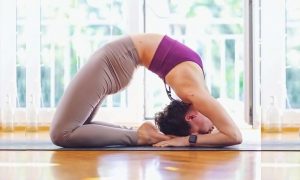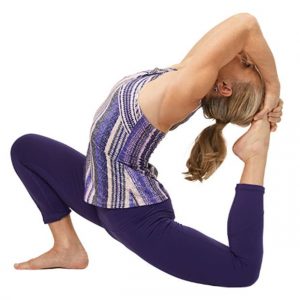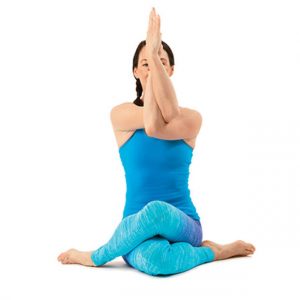You must have heard by now that yoga is good for you. Maybe you too have tried it and found out that it makes you feel better. A consistent practice provides all kinds of mental and physical health benefits. Some, such as improved flexibility, are clearly evident. Others, including mental clarity and stress reduction, may be more subtle, but equally powerful. When put together, all of the benefits below contribute to a growing sense of well-being, which helps explain why so many people find yoga so addictive.
- Improve Flexibility
Walking and stretching in new ways will help you become more flexible, bringing greater range of motion to tight areas. Over time, you can expect to gain flexibility in your hamstrings, back, shoulders and hips. As we age, our flexibility generally declines, especially if you spend a lot of time sitting, causing pain and immobility. Yoga can help reverse this process.

- Builds strength & Enhances muscle tone
Many yoga poses require you to bear your body weight in new ways, including balancing on one leg (as in a tree pose) or supporting yourself with your arms (as in a downward dog Have to face). Holding these poses during many breaths helps build muscle strength. As a by-product of getting stronger, you can expect to see an increase in muscle tone. Yoga helps to shape long, lean muscles in your legs, hands, back and abdomen.
- Improve Balance and supports joint health
Better balance is one of the most important benefits of yoga as you get older. where you stand on one leg and for more advanced students, inversions are great ways to build core strength that keep you upright.
The movements required for yoga have less impact, which you can use without injuring your joints. Yoga also helps to strengthen the muscles around the joints, reducing their weight. People with arthritis often see a marked improvement in their pain and mobility with regular gentle yoga exercises. Increased flexibility and strength may help prevent some types of back pain causes. Many people who have back pain spend a lot of time sitting at a computer or driving a car, which causes tightness and spinal cord shrinking throughout the body. Yoga counteracts these conditions.

- Teaches to breathe better
Most of us take shallow breaths and don’t think about how we breathe. Yoga breathing exercises, called prayanam, focus our attention on breathing and teach us how to take deep breaths, which benefits the whole body. Certain types of breath can also help to clear the nasal passages (helpful for people with allergies) and also calm the nervous system, which has physical and mental benefits on and off the mat.
- Promotes mental peace & Reduces stress
Yoga asana practice is intensely physical. Paying close attention to what your body is doing brings peace to your mind. Yoga also introduces you to meditation techniques, such as how to pay attention to your breath and destroy your thoughts. These skills can prove to be very valuable in intense situations away from the mat, such as childbirth, coping with insomnia or when having an anxiety attack. Also Physical activity is good for relieving stress, and this is especially true of yoga. Because of the required concentration, your daily troubles, both big and small, tend to melt away while you’re on the mat. This relieves you of your stress to a great extent, as well as helps to keep your problems in perspective. Yoga emphasizing being in the present moment can also help because you do not pay attention to the events of the past or anticipate the future. You will feel less stressed when you start a yoga class.

- Enhances self confidence
Doing yoga improves your mind-body relationship, which gives you better information about your body. During yoga, you learn to make small, subtle movements to improve your alignment, keeping you in better contact with your physical existence. You also learn to accept things about your body this leads to feeling more comfortable in your body, boosting your confidence.




















